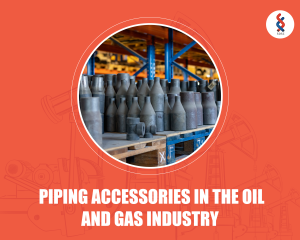Types of valves and its materials used in oil and gas industry
Function
All valves perform all or either of these three major functions- stop and start the flow, regulate the flow, and avoid the flow in a specific direction. Water taps in the bathrooms perform all the three because pressure and temperature of water is comparatively lower than the industrial fluids. Hence, this vast range of valves.
The most important element in the anatomy of a valve design is the disc, without it, it’s just a pipe. The disc opens, closes and semi-closes the opening to modulate the flow. In the oil and gas industry three types of valve discs are used- Linear motion, rotary motion, and quarter turn, to perform the needed functions.
Material
Modern industry prefers and is led by these three major raw materials: Carbon steel, LTCS, Stainless steel. These materials further differ through the process they go under to make the valve. Casting (the body is obtained by casting steel) and Forging (the body is manufactured by forging steel) gives the valves different strengths and weaknesses. Casting is when metals are turned into liquid and put into some form of mould to achieve the desired shape. While, forging is to heat the metal and shape it in desired result by using force. Forged metals have more strength than its cast counterparts but cast is easier, hence cheaper. Although technologies are helping cast metals to give a head to head competition to forged metals, still for high pressure and risky fluid (like oil and gas) forged metals are used. The cast valves are used in water, hydrocarbons and other fluid systems used in the industry.
Type
There are five major types of valves used in the Oil Industry: Globe Valve, Piston Valve, Gate valve, Butterfly Valve, check valve and Ball Valve. These types are more about the shape and functionality; when constructed with different materials, the valve changes its strengths and weaknesses. This gives us even further options to choose from.
Globe and Butterfly valves are mainly used for regulation and modulation.
Piston and check valves are mainly used for avoiding backflow of fluid’s movement direction (similar to arteries and veins in nervous system).
Gate and Ball valves are mainly used to start-stop flow. These two valves don’t regulate, they are the first and last stops for initiation of flow.
Globe valves
The globe valve is used for regulation and modulation of the flow. Its structure makes it different from other regulator valves. The globe valve is strapping, sturdy, and intact; which makes it a good companion to bear high pressure and high temperature.
A globe valve creates a pressure drop in the pipeline, as the fluid has to pass through a non-linear passage. It uses the linear motion disc, which keeps it stable even through high pressure and bigger size.
Piston valves
The piston valve helps in avoiding the back-flow of fluid. Its structure allows it to be a one-way gate, through its linear motion disc. It is used for slimmer structures, 2 or less than 2 inches.The piston valve is used in general need, where harm to apparatuses is not a risk.
Gate valve
The gate valve is ‘the’ valve for all the industries and homes. It is the most common valve, because its only task is to start and stop the flow. The name of this valve, ‘gate’, is taken for its intentional purpose. A gate valve uses a linear motion disc and due to its simple function, it can handle high pressure and temperature. It also comes in all sizes and materials. It is the go to valve for this need.
Butterfly valve
The butterfly valve is quite different from our discussed valves. It uses rotary motion disc and quarter turn instead of linear. It functions as a modulator (not regulator). The butterfly valve modulates in the speed of movement to lessen the volume of the liquid in later phase. Unlike the globe valve which interferes in diameter of the opening, resulting in lesser volume but the speed of the flow is increased. This is the main drawback of globe valves, the more control it has on outflowing volume, the speed gets compounded.
Check valve
Check valves are further divided into two categories: Lift check and Stop check. The major difference between these two are- Lift check valve has linear motion disc and stop check valve has rotary motion disc.
Similar to piston valves, it helps in avoiding back-flow but the check valves have better and more intricate design. It has much better control than piston valves. This type of valve is used to avoid backflow in the piping system that could damage downstream apparatus as pumps, compressors, etc.
Ball valve
The ball valve is also an on-off valve, like the gate valve. Although a ball valve is more compact and lighter than gate valves. Due to its quarter-turn motion disc, it consumes far less energy and time to perform its intended function. This has made the ball valve modern industry standard.
The valves have a different scheme of selection. It contains multiple sub-categories: like disc motion, operation, temperature and pressure handling ability, and not just the quality of the material. All the three sub-categories make the choice for us. If we need to avoid back-flow near a pump, then a Piston valve won’t be the best option rather go for the check valve. Similarly, if the need demands to have an on-off valve down at the giant storage tank outlet a ball valve may be a good choice but the gate valve would be better. It is made to handle pressure, unlike a ball valve which is made for compactness and ease.
At SarsonOSC, we have all the four modern and major valves with us: Gate valves, globe valves, check valves and ball valves. Our options reach further with the materials; Carbon steel, LTCS, Stainless steel; available in both, casting and forged processed metals.
Hope we helped in your valve selection and look forward to being your supply partner. .
Related News


Emerging Markets for Oilfield Supply Centres

Piping Accessories in the Oil and Gas Industry

API Standards and their Importance in the Oil & Gas Industry

How to Choose the Right Supply Centre for You?



